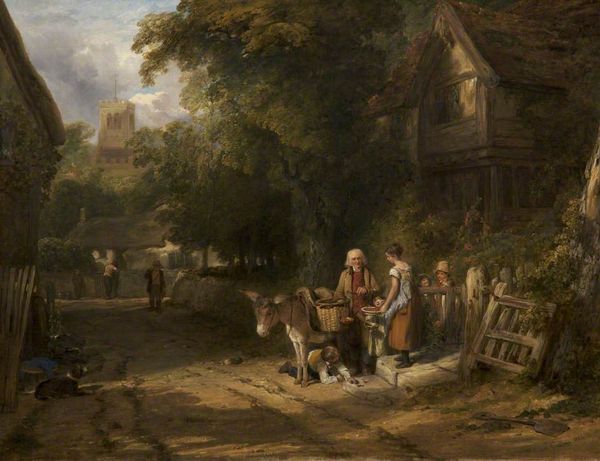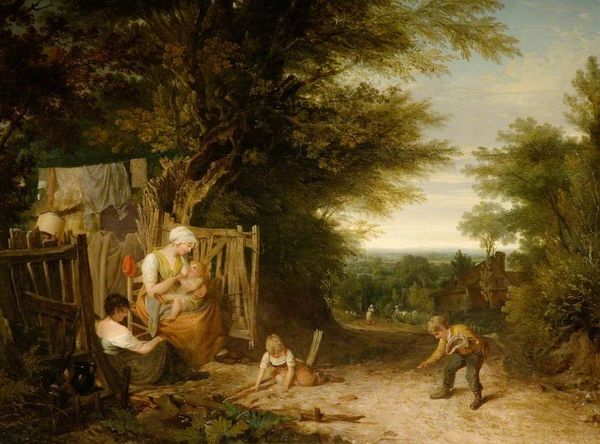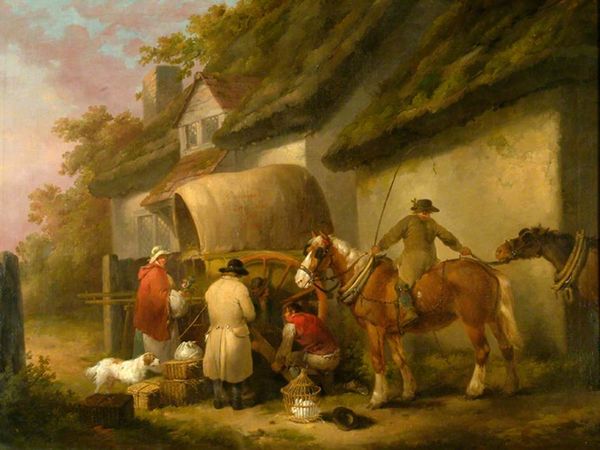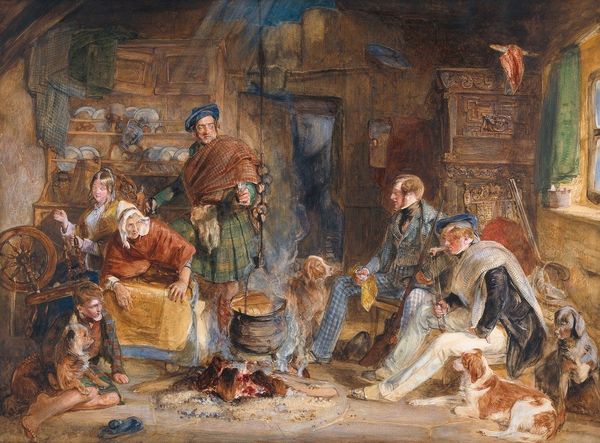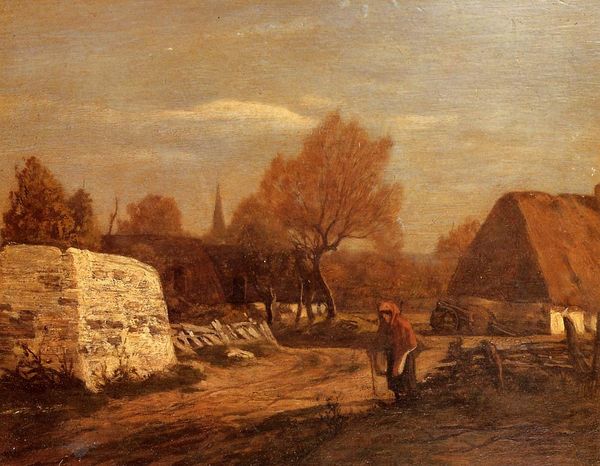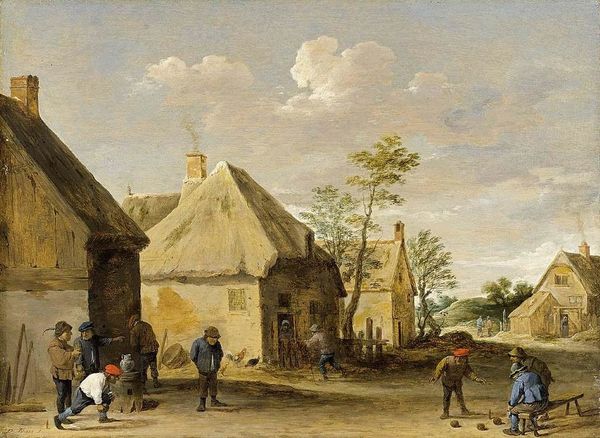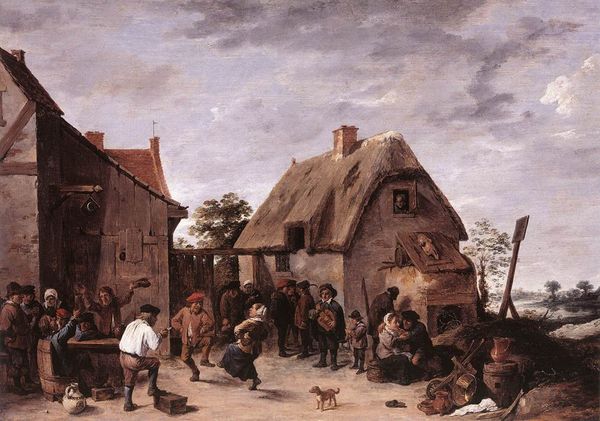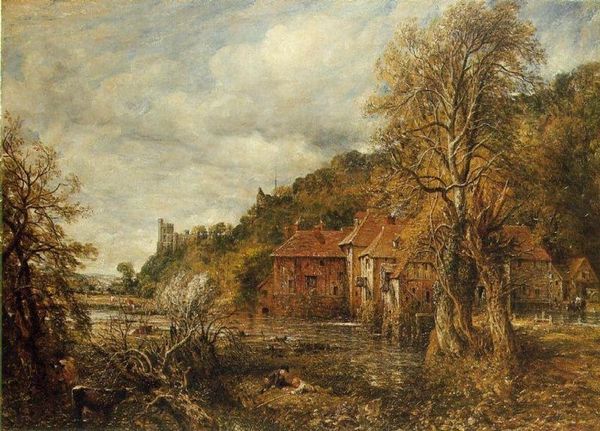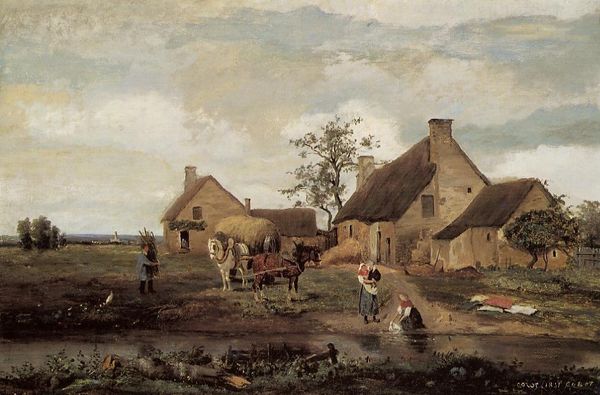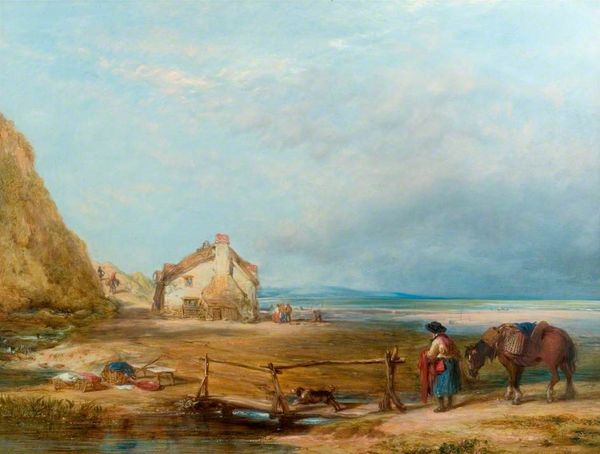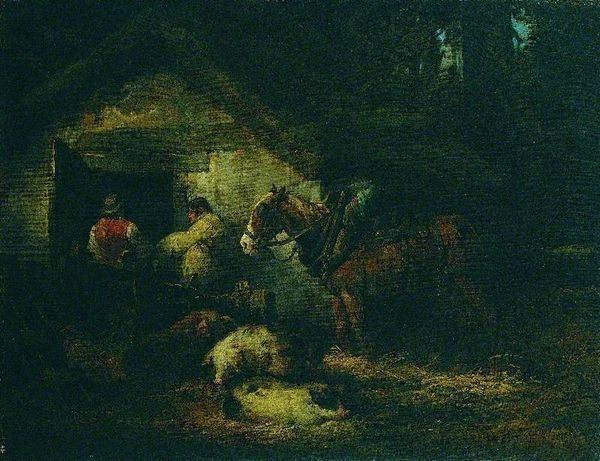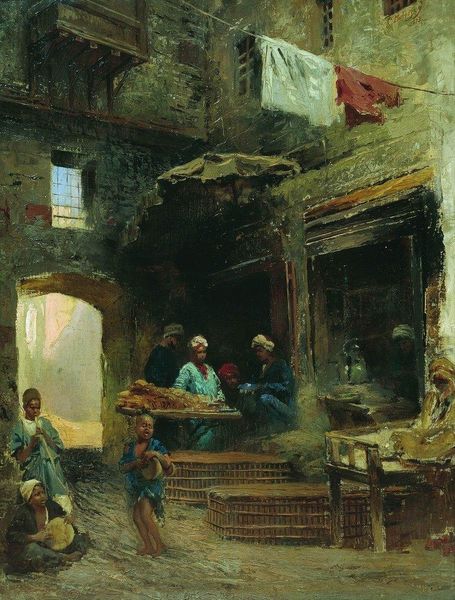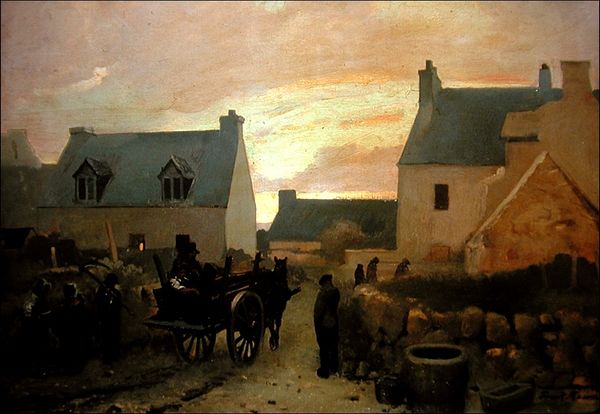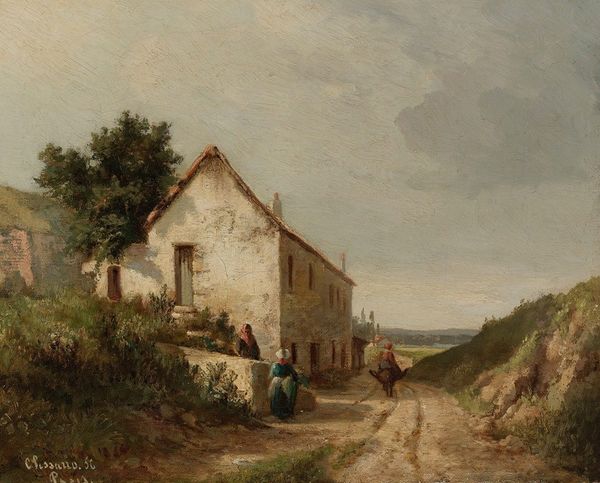
painting, oil-paint
#
narrative-art
#
painting
#
oil-paint
#
landscape
#
impressionist landscape
#
oil painting
#
romanticism
#
genre-painting
Copyright: Public domain
Editor: Here we have what's known as "The Village Gossip," an oil painting by William Collins. The scene portrays figures in what appears to be a small village, maybe engaged in conversation. The palette feels very earthy and muted to me. What do you see in this piece, in terms of the broader story? Curator: It’s a great observation that you mention "story" right away. Beyond the surface of a quaint scene, consider who holds the power to narrate and circulate these stories in a community. Who is seen and who is hidden? Think about the position of women in such societies – often relegated to the domestic sphere, yet central to the transmission of social norms and expectations, right? Are the men gossiping about things outside the village while the women are dealing with what’s within it? Editor: That's fascinating! I hadn't considered the power dynamics inherent in the scene. It makes you wonder what information is being exchanged, and who is benefiting from it. Is Collins trying to say something about that imbalance of power in the narrative? Curator: Exactly! Think about gendered spaces and access to information in this historical context. What do we learn from this painting about how visibility and voice are distributed? Moreover, in whose interest is the narrative spun? We also see a child with these adults. To me, Collins seems to hint that certain behaviors are nurtured in certain communities and, later, in new generations. Editor: That makes so much sense. It adds a whole other layer to the work that I completely missed at first glance. Now I see the entire work as more political than simply a rendering of daily life. Curator: Right. And seeing that political context lets us understand the painting as more than just a historical artifact. It lets us see how those power dynamics still subtly affect society today. Editor: This has been really enlightening; it changed my perspective entirely. Curator: Mine too! The beauty of art history is finding these intersections of past and present through critical lenses.
Comments
No comments
Be the first to comment and join the conversation on the ultimate creative platform.
